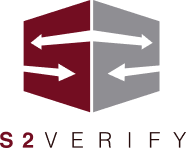The HR Guide to AI Recruiting Compliance When Using Chatbots
AI-powered recruiting chatbots are gaining traction for good reason. They reduce manual effort, streamline candidate communication, and offer always-on responsiveness. However, behind efficiency lies a less visible set of concerns: legal and regulatory compliance.
As more organizations automate candidate engagement, it’s critical to understand how these tools intersect with laws such as the Fair Credit Reporting Act (FCRA) and guidance from the Equal Employment Opportunity Commission (EEOC). Without thoughtful implementation, an AI chatbot can quietly expose your hiring process to serious legal risks.
Why Automation Doesn’t Equal Exemption
AI recruiting tools aren’t exempt from employment laws. When they influence hiring decisions, they’re subject to the same scrutiny as any human recruiter or hiring manager.
Take the FCRA, which governs consumer reports, including background checks, in hiring decisions. Employers must provide candidates with clear disclosures, obtain written authorization, and follow strict procedures for pre-adverse and adverse actions. If your chatbot automates the background screening step without confirming these actions, your process may be out of compliance before a human sees the file.
The same principle applies under the EEOC. Chatbots that use algorithmic filters or sentiment analysis to rank applicants must be vetted for potential bias. If the tool disproportionately screens out candidates based on language patterns correlated with age, race, or gender, even unintentionally.
Where Risk Enters the Conversation
AI-enabled chatbots create efficiencies but also remove human oversight from conversations that may carry legal weight. This is especially risky in areas governed by federal mandates.
For example:
- A chatbot that says “We’ve decided not to move forward based on your background report” without sending a pre-adverse action notice is out of compliance with the FCRA.
- A system that automatically rejects applicants with certain types of criminal records, without offering individualized assessments, may run afoul of EEOC guidance or state-level fair chance hiring laws.
- A chatbot that only engages with candidates in English, without offering multilingual support or clear accessibility options, may limit fair access to opportunities.
These aren’t theoretical issues. The Federal Trade Commission (FTC) has already signaled increased scrutiny of algorithmic bias, and the EEOC has issued technical guidance warning against overreliance on AI in employment decisions.
Five Safeguards for Chatbot Compliance
To reduce exposure to FCRA and EEOC violations, any AI tool used in recruiting should include these safeguards:
- Consent before screening: Do not initiate background checks without digitally captured, standalone written consent.
- Structured adverse action: Ensure pre-adverse and adverse notices are sent and include copies of the background report and FCRA summary of rights.
- Bias audits: Regularly review AI outputs for disparate rejection rates across protected classes and document the process.
- Accessibility: Offer multilingual support, screen-reader compatibility, and plain-language instructions for candidates at all education levels.
- Human override: Always allow for a compliance-trained human to review any adverse decision before it’s finalized.
If your system can’t do these things, it’s not just a software issue; it’s a legal risk.
Compliance Is a Core Feature
Regulators are catching up to automation. Several states now require algorithmic transparency in employment decisions, and federal agencies are actively developing new enforcement protocols for AI-driven hiring.
That makes now the time to audit your systems. How is consent managed? Are adverse action procedures tracked and timestamped? Does your chatbot screen in ways that could produce a disparate effect?
Employers who treat compliance as a plug-in are falling behind. The organizations that will thrive under increased regulatory scrutiny treat compliance as a core feature of their talent strategy—built into every tool, workflow, and conversation.
What This Means for HR Leaders
If you rely on automation to scale hiring, you must demand more than technical performance. You need legal assurance, auditability, and full adherence to federal and state requirements. You cannot delegate that to a chatbot or to any tech vendor that doesn’t specialize in compliant screening.
S2Verify was built on the principle that speed and accuracy should never come at the cost of compliance. With over 13,000 clients across industries, we help organizations navigate FCRA and EEOC requirements with rigor, transparency, and trusted support.
The stakes are real. A single misstep in your recruiting workflow can lead to fines, lawsuits, or reputational harm. But when compliance is engineered into your process from the start, you can move fast and stay safe.
Don’t Let a Bot Write Your Compliance Story
Automation may be changing how you recruit, but it doesn’t change what the law requires. AI tools must be deployed responsibly with built-in compliance safeguards and human oversight.
The cost of ignoring these responsibilities is steep. The value of getting them right is even greater. Partner with the right technology and people to ensure your AI helps you hire with confidence, not regret.







